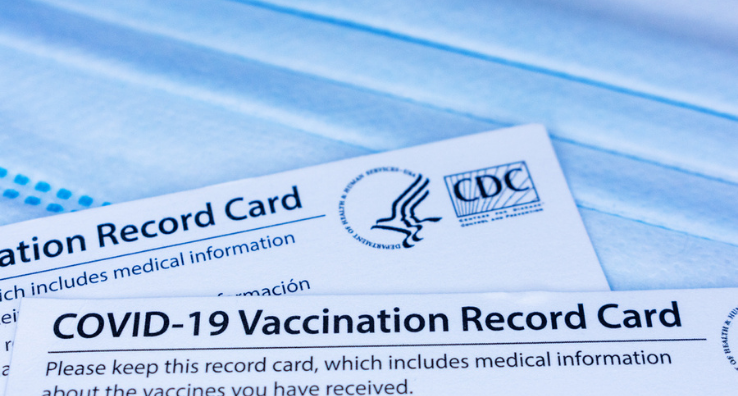Easing the Challenge of Workforce Vaccine Mandates

When the COVID-19 Delta variant began surging in June, OSHA issued an emergency temporary standard (ETS) to protect healthcare workers. Since then, many healthcare organizations have been struggling to gain the full compliance of their doctors, nurses, and other healthcare professions. Some employees have opted to lose their jobs rather than receive the vaccine, adding to an existing shortage of workers.
Now other organizations are grappling with enforcing President Biden’s latest plans for a second and broader ETS that requires employers with more than 100 employees to mandate vaccinations or submit unvaccinated employees to weekly COVID testing.
OSHA the Enforcer
Enforcement of this new mandate has been placed squarely on OSHA as part of the agency’s efforts to maintain a safe workplace. Once the ETS is in place, OSHA would likely penalize companies that fail to meet the new federal safety standard with fines up to $14,000 per incident. This situation has companies scrambling to address several unknowns:
- What does “mandatory” mean when it comes to developing a policy on vaccine requirements?
- Will their policies require complete or partial and compliance?
- How do they write a new policy that is clear and defensible?
- How do they announce it?
- How do they provide accommodations for employees who refuse the vaccine?
- And can they ensure employees are vaccinated and show proof to OSHA auditors?
The answer to these and other questions can be found in the Seyfarth Vaccine Policy Playbook. Seyfarth, a respected employment law firm, has provided this free guide for any company that’s planning an employee vaccine rollout. Here’s some of what you can find in it.
What Does Mandatory Mean?
No one vaccine policy can fit every company. Consideration must be given to people, the types of jobs, and potential accommodations. Seyfarth describes three forms of mandates:
- A complete and total mandate that requires all employees across all job categories to be vaccinated.
- A complete but partial mandate that distinguishes which individuals in specific jobs must be vaccinated.
- Conditional mandates that require vaccination as a condition of in-person work.
How do You Design a Vaccine Policy?
When instituting a vaccine policy of any type, you must explain the vaccination requirements and consequences of non-compliance within that policy. A complete and total or complete but partial mandate, for example, must address varying and legally required accommodations for different disabilities and religions.
Under a conditional or soft mandate, accommodation should generally be a non-issue. Workers who, for medical reasons, should not receive the vaccine or object on religious grounds can work remotely and remain unvaccinated. However, accommodation issues will still arise. For example, employees who work remotely 90% of the time may need to attend in-person meetings or onsite events occasionally. Whether such employees must be vaccinated should be evaluated case by case.
How do You Announce a Vaccine Policy?
Mandatory vaccination policies will be controversial, probably offensive to some. That’s why it has to come from the top, says Seyfarth.
Anyone skeptical of either the policy or vaccines generally needs to know this mandate comes from the top. Leadership must support and demonstrate a commitment to the organization’s policy decision. Accordingly, the policy should be announced by the CEO or its equivalent.
Part of your communications plan should include:
- How can employees raise questions or concerns, and who will be authorized to speak to employees about the policy?
- What guidance will those authorized individuals be provided to help them answer questions consistently and in line with the organization’s intent?
- What guidance will be provided to front-line managers who are likely to receive questions about the program?
- How will employees be instructed to handle press inquiries? Ideally, there should be a single, clearly identified point of contact for this.
How do You Verify Vaccination Status?
The EEOC has confirmed that asking an employee about their vaccination status is not a disability-related inquiry under the ADA. Because proof of vaccination is not a disability-based inquiry, the EEOC says requesting or requiring such proof does not violate the ADA. Nor does it violate HIPAA limits on medical inquiries.
However, the EEOC and others have advised employers to request only necessary information about vaccination status, namely the information on the vaccination card. For example, the CDC says if an employer requires workers to provide proof of vaccination from a pharmacy or their health care provider, the employer cannot mandate that the employee provide any medical information as part of their proof.
Acceptable types of proof include:
- A vaccination record card or copy of it
- A note or letter from a healthcare provider
- An attestation by the employee.
This is just some of the information provided in the Seyfarth Vaccine Policy Playbook. You can click here to get your copy. If you have questions about OSHA or how it relates to COVID-19, contact us, and we’ll put you in touch with one of our consultants.





